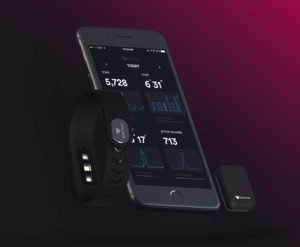Why is Heart Rate Variability Important?
Why is Heart Rate Variability Important?
Heart Rate Variability, which is also known as ‘cycle length variability’, ‘RR variability’, and ‘heart period variability is a reliable marker for physiological factors that directly affect heart rhythms. It reflects the heart’s ability to adapt to changing circumstances – stress, exercise, and disease – by balancing the regulation of the autonomic nervous system which controls body functions such as breathing, heartbeat, and digestion. An elevated heart rate variability is related to good health and elevated levels of fitness. A lower heart rate variability can be an indication of many health-related issues such as hypertension, diabetes, obesity, and other cardiovascular issues.
Chronic stress can seriously affect general health and productivity and can be easily seen in HRV data. Restoring equilibrium in such circumstances is essential for a healthy lifestyle.
Athletes use HRV to assess their efficiency due to the immediate effect of physical activity on variation in heart rate. Chronic overtraining often leads to physiological and psychological symptoms that weaken performance and may delay full recovery for weeks or more.
Monitoring heart rate variability gives us thorough insights into strength and fatigue.
How does it work?
Heart Rate Variability describes fluctuations in continuous heart rate intervals for an average pulse over a period of time. HRV is particularly affected by the autonomic nervous system which includes the sympathetic nervous system (SNS) and the parasympathetic nervous system (PNS).
SNS mobilizes the body’s hormones and nerves to quickly respond to exercise, stress, and “combat situations”, allowing a person to respond quickly in, for example, dangerous situations. Here, the heart rhythm becomes very regular, with a lower HRV as a result.
Conversely, PNS has a slowing effect on heart rate, which helps the body save energy. This system plays a major role in the body’s attempts to establish equilibrium, including digestion and glandular activity. Here, the heart rhythm becomes more aware of the ongoing body processes and a bit irregular, leading to a higher HRV.
Clinical applications of HRV analysis
Heart Rate Variability measurements are non-invasive and most reliable when performed under standardized conditions. Research suggests that low HRV is a negative result of cardiovascular disease, diabetic neuropathy, high blood pressure, and heart attack. HRV is also useful for observing people with diabetes which can cause severe dysfunction in the autonomic nervous system. Low HRV may point to the onset of diabetic neuropathy, a complication of diabetes mellitus characterized by widespread degradation of small nerves in the sympathetic and parasympathetic nervous systems. Smoking and alcohol consumption also affect HRV. Smokers have a lower HRV, possibly a direct effect of how smoking degrades the circulation regulated by the autonomic nervous system. It has also been shown that people who drink alcohol have a significantly lower HRV value than the ones that are non-alcohol dependent.
Clinical centers, academics, researchers, and physicians around the globe use HRV’s heart rate variability:
- For predictive analysis: HRV can support the probability of future illnesses such as diabetes or heart-related issues and illnesses.
- For assessment of medical conditions: HRV can assist to determine distinct medical circumstances such as anxiety, stress, anger and other heart associated issues
- By athletes: Athletes can measure their fitness levels and track their over-training as well. A substantial decrease in their HRV implies a body that is stressed or over-strained.
- To determine fitness objectives: HRV can be used to train the body efficiently and to attain fitness objectives.
How Biostrap shows HRV
Biostrap utilizes the overnight heartbeat for HRV assessment, as this provides most data on recovery for choices in stress, mental and physical condition, and lifestyle. It provides an overview of the current HR variability but also last week, month, and year. Biostrap determines a baseline in the first few days afterward, it demonstrates what the baseline is and how HRV fluctuates compared to this.
Luft for Life Recommendation

